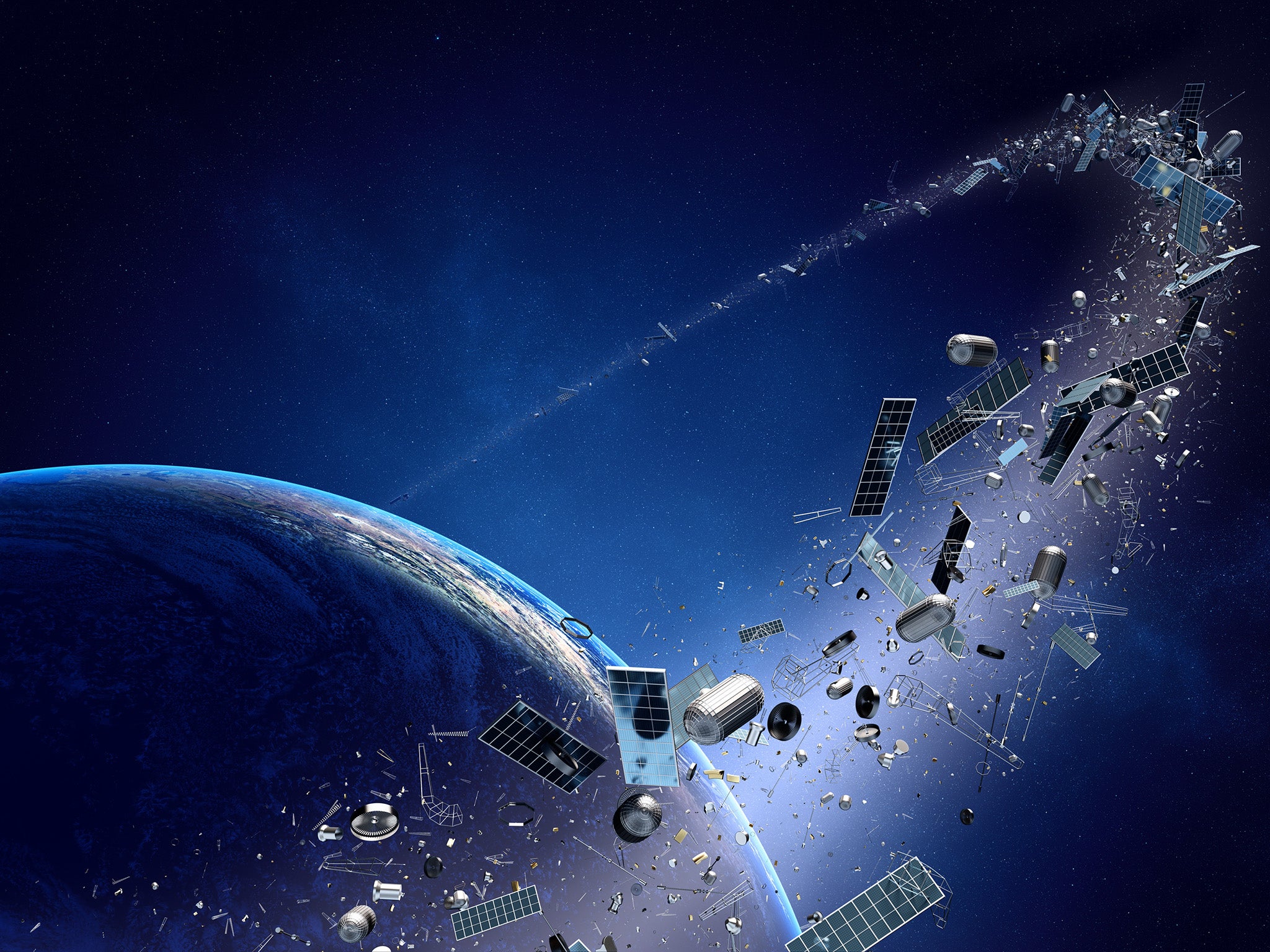US FCC adopts first ever space junk rule for satellites
Introducing its first ever formal rule on when satellites must deorbit after their useful lives, the FCC hopes to avoid traffic jams and collisions in space

The US Federal Communications Commission (FCC) adopted a new rule governing satellites on Thursday, requiring operators to deorbit satellites within five years of them ending their mission.
Satellite operators will have two years to adjust to the new rule, the first of its kind in the US. An existing, decades-old and non-binding guideline had encouraged satellite operators to deorbit their satellites within 25 years of the end of the satellite’s mission.
“But 25 years is a long time,” FCC chairwoman Jessica Rosenworcel said in a press statement Thursday afternoon. “There is no reason to wait that long anymore, especially in low-Earth orbit.”
The new rule is necessary, Ms Rosenworcel added, to combat the growing problem of space debris in low Earth orbit.
“Right now there are thousands of metric tons of orbital debris in the air above—and it is going to grow,” she said. “We need to address it. Because if we don’t, this space junk could constrain new opportunities.”
While the FCC does not directly regulate satellites in orbit — no US regulator currently has such authority, as the Federal Aviation Administration only grants permits for rocket launches and reentries, not orbital flight — US operators must apply with the FCC for permission to use radio frequencies with their satellites. A longstanding part of that application process requires that operators file a space debris mitigation and deorbiting plan.
The new rule will tighten the previous guidelines, requiring “satellites ending their mission in or passing through the low-Earth orbit region (below 2,000km altitude) to deorbit as soon as practicable but no later than five years after mission completion,” according to an FCC media release.
“Since 1957 humanity has put about 10,000 satellites into the sky. More than half of those satellites are now defunct,” Ms Rosenworcel said.
For example, in 1958, Nasa launched the fourth ever artificial satellite, Vanguard 1, “and it still circles the planet today”, she said.
Dead satellites, those past their mission lifetime and no longer capable of maneuvering, can increase costs to operators of active satellites, who must occasionally move their satellites to avoid the dead ones. And if dead satellites crash into other satellites, dead or alive, they can create dangerous orbital debris.
Satellites are not the only potential causes of space debris. Discarded rocket stages and the debris generated by military tests of anti-satellite missiles, such as the Russian military conducted in 2021, are also major problems.
But the more satellites are in orbit at any time only increases the risks that something will hit something else, according to Brian Weeden, Director of Program Planning at the Secure World Foundation, who believes the new five-year rule could make a difference.
“We’re currently launching about 1,000 new satellites a year into orbit,” he told The Independent by email. “If they spend around 5 years doing their mission and then are allowed to slowly deorbit over 25 years, we’re going to have a traffic jam in LEO for a few decades as everything comes back.”
University of Southampton Professor or Astronautics Hugh Lewis isn’t so certain the new rule will be helpful.
In a thread on Twitter, Dr Lewis shared data suggesting that while a five-year deorbit rule could reduce the number of potential collisions between satellites at higher altitudes, “we don’t see in these results is a significant reduction in close approaches or collisions at the altitudes currently being dominated by commercial space industry and human spaceflight”.
Dr Lewis went on to argue some data suggests a five year rule could actually cause more collisions to occur at the altitudes where most commercial satellites and the International Space Station Orbit. He told The Independent by email that he would prefer to see an “immediate de-orbit” standard of the sort proposed by the European Space Agency.
But the rule might ultimately have little effect on the practices of the companies launching very large constellations of low Earth orbit Satellites right now, such as SpaceX with its Starlink broadband internet satellites, according to Dr Weeden, with many operators already deorbiting satellites at a faster pace.
“Most of the constellation operators have already pledged to bring down their satellites faster than the current requirement of 25-years, and in fact Starlink has been doing it in only a few years,” he said. “So this new rule is essentially codifying where most of the industry was going to do anyways.”
A bigger question, Dr Weeden added, is just who in the US should be responsible for managing orbital debris, and whether the FCC is the appropriate agency.
“They’re doing it because there really isn’t anyone else at the moment, but the FCC is also not the ideal agency as their focus is [radio frequency spectrum coordination, not space debris,” he said. So while there has been a push in the US to give the US Department of Commerce on-orbit authority to manage space debris, “Congress has not yet given them the explicit authority to do so, and so this gap remains that the FCC is trying to fill”.
Join our commenting forum
Join thought-provoking conversations, follow other Independent readers and see their replies
Comments
Bookmark popover
Removed from bookmarks